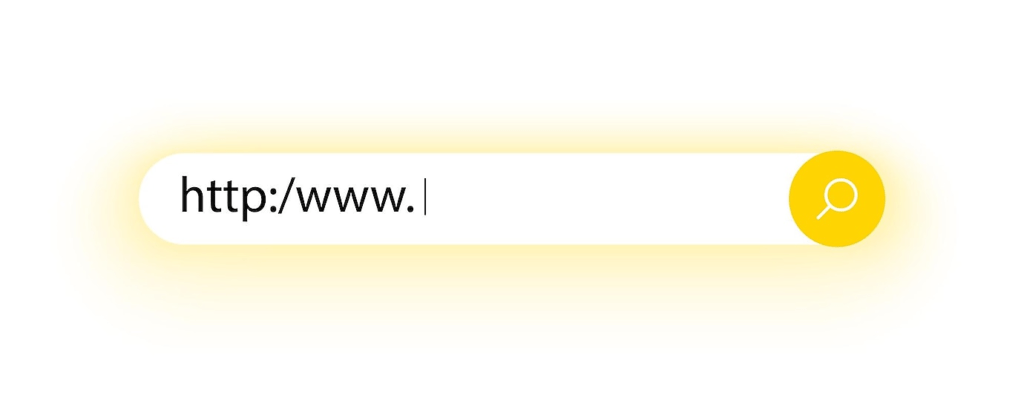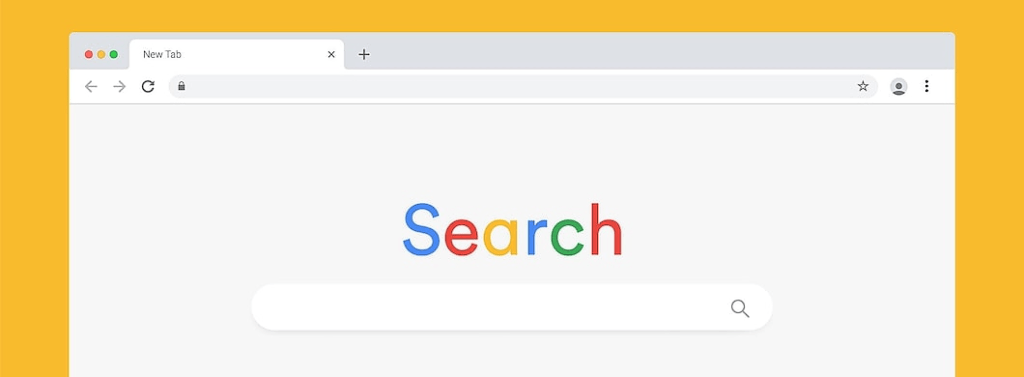- Amelia Sabestine
- 0 Comments
- 1172 Views
Ever wonder how search engines like Google and Bing gather all the information they display in their search results? All thanks to spiders, often known as web crawlers. These automated bots continuously cruise the web, bouncing from site to site and link to link, finding new sites, and indexing them for quick web searches.
Web crawlers are actively navigating the internet and indexing billions of web pages to create enormous search engine databases. Web crawlers are constantly moving, following connections, and categorizing everything they uncover using complex algorithms. They are awake at all times. Every time you conduct a web search, you have access to the entire world’s knowledge because of their tireless work.
An Internet search engine bot, crawler, or spider retrieves and indexes content from various websites. Such a bot’s objective is to discover the topics of (nearly) all web pages so that it may later retrieve the information when required. The reason they are referred to as “web crawlers” is because the technical term for automatically accessing a website and getting data via a software program is “crawling.”
The complexity and intelligence of web crawlers have grown over time. Modern crawlers can navigate dynamic web pages, understand site maps, avoid traps, and more.
Web Crawler
Web crawlers, also known as spiders, are software programs that systematically browse the internet. They crawl from page to page, following links between websites. As they explore, they index information about the sites they encounter. They are there to index content so that websites can be found in search engine results.
How Do Web Crawlers Work?
How do web crawlers work? Web crawlers are intelligent and can judge the significance of each web page. The Internet is always evolving and growing. Web crawler bots begin their searches with a seed, or a list of known URLs, because it is impossible to determine how many webpages there are overall on the Internet. First, they crawl the pages at those URLs. When they identify links to other URLs while crawling those web pages, they add those URLs to their list of other pages to crawl.
This procedure might last virtually forever, given the enormous number of web pages that could be indexed for search on the Internet. A web crawler will, however, adhere to specific rules that enable it to be more discriminating about which pages to crawl, in what order to crawl them, and how frequently to crawl them again to look for content updates.
Web crawlers don’t read web pages like humans. Instead, they extract key details like:
- The page title and content
- Images, videos, and other types of content
- Other pages’ links
- Page metadata (descriptions, keywords)
As it visits these sites, it finds new links and adds them to the frontier. The crawler keeps track of which pages it has already seen so that it does not crawl in circles. It may revisit pages that have changed.
The crawler passes the information it gathers to an indexer, which organizes the data into a searchable format. The indexed data powers search engines, allowing people to search the web.
Crawlers respect politeness rules, like not overloading servers with requests. They crawl at a moderate pace to avoid negatively impacting website performance or availability. Crawlers also avoid scraping data in an unethical manner.
Web crawlers have enabled large-scale indexing of the web, revolutionizing how we discover and access information online. Though simplistic, these automated digital explorers have had an enormously positive impact.
So the next time you run a web search, remember the hardworking crawlers behind the scenes that make finding information on the vast internet possible!
Seed List
To get started, the web crawler needs a list of seed URLs to crawl. The crawler receives its first set of URLs to index from these seeds, which the search engine manually compiles.
Once the crawler has its seed list, it begins indexing these pages. As it indexes each page, it finds new links and adds them to its crawl queue. This process continues as the crawler works through the queue, indexing new pages and adding more links to crawl.
The seed list is critical because it determines the initial scope and focus of the crawl. If the seed list only contains movie review sites, the crawl will stay within that niche. But with a diverse range of seeds, the crawl can expand into many areas of the web.
Some crawlers start with just a few hundred seeds, while others may have thousands or even millions of seeds to get the crawl going. The seeds should represent a wide range of topics, content types, and domains, so the crawl reaches the entire web.
As the crawl progresses, the importance of the initial seeds lessens. But without that first seed list to start indexing and discovering new links, the web crawler wouldn’t have a web to crawl!
Fetching The Actual Content
Once the crawler has discovered web pages to explore, it needs to retrieve the content from those pages. To access each page’s HTML code, the crawler will make requests to the web servers that are hosting those sites.
Then it parses the HTML, analyzing the code to identify the main content on the page. It filters out ads, navigation menus, and other peripheral content. The crawler is focused on capturing the meaningful essence and subject matter of the page.
The crawler also evaluates any links, images, scripts, and other resources called within the HTML and downloads those related assets. All of this content, from text to images to code, is what comprises the indexed page in the search engine’s database.
Having an updated index of fresh, high-quality content is how search engines can deliver the most relevant results to users’ queries. Web crawlers thus play an integral role in facilitating fast, accurate searches. Their ability to crawl the web, parse pages, and build a comprehensive index of content keeps the world’s information at our fingertips.
Intelligent Crawling
To effectively crawl the massive scale of the modern web, crawlers need to be intelligent. They can’t just blindly follow every link they come across, or they’d crawl in circles and miss important content.
Focused crawling
Intelligent crawlers use focused crawling techniques to find the most relevant content. They analyze the links and prioritize crawling the most promising ones. Things like the anchor text, page titles, page content, and link structure are all clues to a page’s relevance. The crawler learns over time to determine which clues indicate high-value content.
Crawlers also avoid crawling the same content multiple times. They keep track of pages they’ve already crawled, so they’re not wasting resources re-crawling them. Some crawlers also detect and avoid crawling spam, duplicate content, and low-quality pages. By focusing their efforts, intelligent crawlers can discover and index high-quality content from across the vast web.
Parsing
Once the crawler has found web pages, it needs to extract useful information from them. This is known as parsing the web page.
The parser analyzes the HTML code of the page to identify key elements like:
- Text
- Images
- Videos
The parser extracts this information and passes it to the indexer, which determines which data is most important to index based on the crawler’s guidelines. For example, if the crawler is focused on news articles, the parser will prioritize extracting:
- Article text
- Title
- Publish date
- Author
While ignoring less relevant information like navigation menus, advertisements, and website templates. The parser needs to be able to handle web pages in many different formats, from simple HTML to complex content management systems. It uses algorithms to identify the key content, even on pages it hasn’t encountered before.
The parser plays a crucial role in enabling the search engine to provide high-quality results. By extracting the most useful information from billions of web pages, it allows the indexer and ranking algorithms to function. Without an effective parser, the crawler would be unable to make sense of most of the data it finds on the World Wide Web.
Data Storage
Once a web crawler has accessed and indexed web pages, all that data needs to be stored somewhere. As the crawler runs continuously, the amount of stored data grows exponentially.
Databases
A database management system (DBMS) that can handle massive amounts of data stores the indexed data, also referred to as the crawl database. The database management system (DBMS) arranges the data into structured groupings that may be efficiently queried. Popular choices for web crawlers include MongoDB, Solr, and Elasticsearch. These databases are optimized for speed and scalability to support the massive datasets from web crawlers.
The crawl database contains details on billions of web pages and is constantly being updated as the crawler finds new or changed content on the web. Storing all this data in a fast, scalable database is crucial for web crawlers to function and provide relevant results to search engine users. As technology and the Internet continue to progress rapidly, web crawlers and their databases must keep up to handle the increasingly huge volumes of data on the World Wide Web.
Discovery of New URLs and Sites
Once your web crawler has a list of seed URLs to start with, it begins the discovery process to find new URLs and websites to explore.
Following Links
The most straightforward way your web crawler finds new sites is by following links on pages it has already crawled. It parses the HTML of the page and extracts any links, adding them to its list of URLs to visit.
In doing so, the web crawler is meticulously building its index of knowledge about the web landscape. Over time, it will have discovered and indexed millions of web pages, constantly updating its map of the internet.
Some links may lead to pages on entirely new domains, exposing your web crawler to more of the web. By recursively following links and crawling page after page, your web crawler can uncover huge portions of the publicly indexable internet.
Of course, there are some links, like infinite loops, that could send the web crawler into a tailspin. To avoid this, web crawlers employ techniques like link filtering, page scoring, and politeness policies to focus their crawling efforts on the most valuable and crawl-worthy content.
With time and continuous operation, a web crawler becomes remarkably efficient at discovering and indexing new corners of the web, building what is essentially an ever-expanding portrait of the internet’s content and connections. But without those first seed URLs, the crawling expedition would never begin.
Key Components of a Web Crawler
A modern web crawler’s essential elements are as follows:
Database
The database keeps track of URLs, content, metadata, and other details about crawled websites and web pages. The database is expanded when the crawler finds new pages. The database allows the crawler to avoid re-crawling pages it has already seen.
URL Frontier
The URL frontier contains a list of URLs that the crawler has found but not yet visited. The crawler retrieves URLs from the frontier, crawls them, and adds any new URLs it finds to the frontier. This process repeats, allowing the crawler to discover new parts of the web.
Parser
The parser analyzes the content and structure of web pages. It extracts URLs, text, links, metadata, and other information. The parser passes this data to other components, like the indexer and URL frontier.
Indexer
The indexer organizes and stores data about websites and web pages, just like Shopify SEO services, in a searchable format. The indexer allows users and algorithms to quickly look up information about the content the crawler has found.
Scheduler
The scheduler determines the order in which the crawler visits URLs. It prioritizes important pages and makes sure the crawler distributes its resources efficiently. The scheduler helps maximize the quality and quantity of pages the crawler can process.
Politeness Policy
The politeness policy enforces rules to avoid overloading websites. It instructs the crawler to delay between page requests and limit the crawling rate. The politeness policy helps the crawler operate ethically and avoid detection or blocking.
Optimization Techniques for High-Performance Crawlers
To optimize your web crawler for high performance, you can implement a few techniques.
Politeness Policy
Implement a “politeness policy” that respects website policies by not overloading servers with requests. Have your crawler delay between page requests and limit the number of concurrent connections. This courteous crawling will avoid getting your crawler banned from sites.
Focus Crawling
For improved relevancy, focus your crawl to stay on topic by filtering pages. That’s why keywords are important for SEO, semantic similarity, and page rank. The tighter the focus, the higher the quality of the results.
Parallelization
Break up the crawl into separate components that can operate concurrently across multiple machines. Distribute URLs to crawl, manage the politeness policy, and consolidate results. Parallelization speeds up crawling and provides scalability.
Compression
Compress crawled data to save space. Gzip compresses text and uses image formats with high compression, like PNG. Compression allows you to store more data and reduces bandwidth needs.
Caching
Cache crawled pages and assets locally. Caching avoids re-downloading duplicate content and reduces the load on websites. Check the cache first, and only crawl new or updated content.
Remove Duplicates
Detect and remove duplicate pages, images, and other assets as you crawl to avoid indexing and storing the same content multiple times. Remove exact URL matches as well as near-duplicates.
Following these techniques will significantly improve your web crawler’s performance, scalability, and quality of results. A finely tuned, high-performance crawler can achieve broad, deep crawls of the modern web.
The Role of Crawlers in Search Engines
How does a crawler search engine work? A crawler examines the material and follows links as it navigates the web, compiling an index as it goes. Search engines then use this index of information to provide relevant results in response to user search requests.
Web crawlers start with a list of URLs to visit, called the crawl frontier. As the crawler visits these pages, it identifies all the links within the page and adds them to the crawl frontier. The crawler then visits these links and repeats the process, gradually exploring more and more of the web.
Crawlers play an integral role in how search engine crawlers work. Without crawlers constantly exploring the web and updating search engine indexes, search engines would quickly become outdated and irrelevant. Crawlers allow search engines to provide up-to-date, comprehensive results for the billions of searches conducted every day.
Conclusion
So there you have it: a detailed guide about the web crawler, how the Google web crawler works, and how crawlers work in search engines.
A peek inside the engine that powers local SEO services and indexing Web crawlers are complex software systems that work tirelessly behind the scenes to discover and catalog the vast expanse of the internet. Though you may take web search for granted, a whole lot of engineering and computing power goes into delivering fast, relevant results for your everyday queries.







